WordPress installation
System requirements for WordPress
Database - MySQL 5.0& plus;
Web Server -
WAMP(Windows)
- ##LAMP(Linux)
- XAMPP(Multi-platform)
- MAMP(Macintosh)
- ##Operating System
- Cross-platform
- Browser support
- IE (Internet Explorer 8 & plus;), Firefox, Google Chrome, Safari, Opera
- PHP Compatibility
- PHP 5.2 & plus;
Download WordPress
When you open the link https://wordpress. org/download/, you will get to see a screen as the following snapshot -
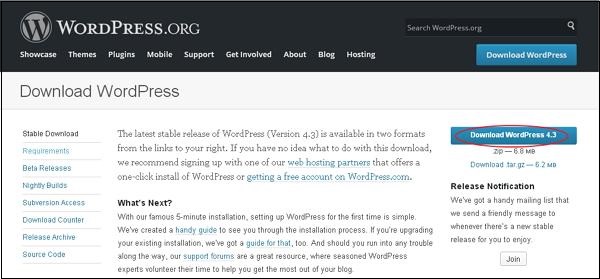 Create Storage Database
Create Storage Database- WordPress requires MySQL database. So create a new empty database with user/password (e.g. user is "root" and password is "root", otherwise you can set it as per your convenience).
- You can then proceed with the installation process as described below.
- Installation Wizard
Setting up WordPress to your system is easy. The following steps describe how to set up WordPress locally on your system.
Step (1)- Extract the downloaded WordPress folder and upload it to your web server or localhost.
Step (2)– Open your browser and navigate to your WordPress file path, then you will get the first screen of WordPress installer as shown in the screen below. In our example, the path is localhost/<Your_wordpress_folder>.
Select your WordPress language and click Continue.
Step (3) – In this step, you can review the information required by the database before proceeding with the WordPress installation.
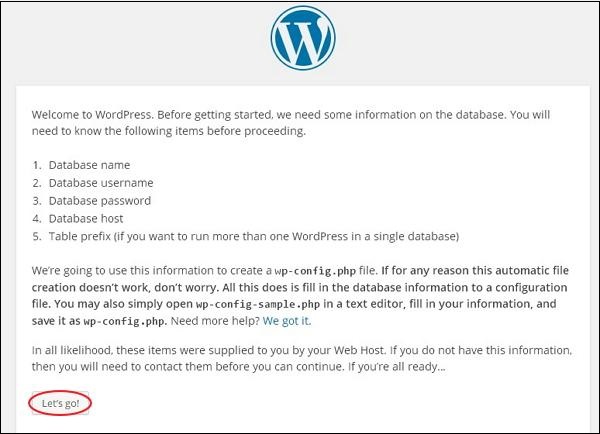
ClickLet's go!
Step (4) - Here you have to enter information about MySQL Information for the database, as described in the following screen.
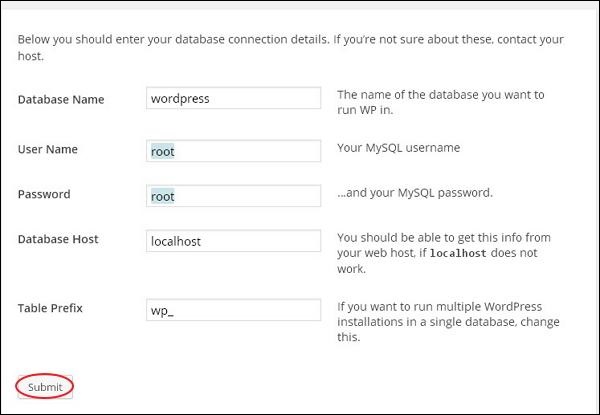
Database Name - Enter the database name created for WordPress in the MySQL database.
Username - Enter the username for the MySQL database.
Password - Enter the password you set for the MySQL database.
Database Host - Write the host name, which is localhost by default.
Table Prefix - Used to add prefixes in database tables, which helps when running multiple sites on the same database. It takes the default value.
After filling in all the information, click the Submit button.
Step (5) – WordPress checks the database settings and gives a confirmation screen as shown in the snapshot below.
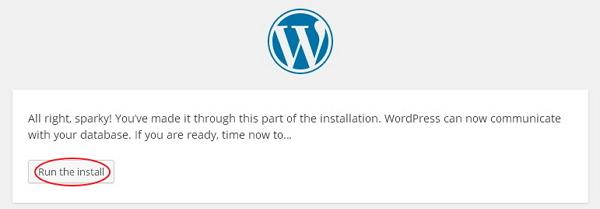
ClickRUN the install
Step (6) - Enter management information.
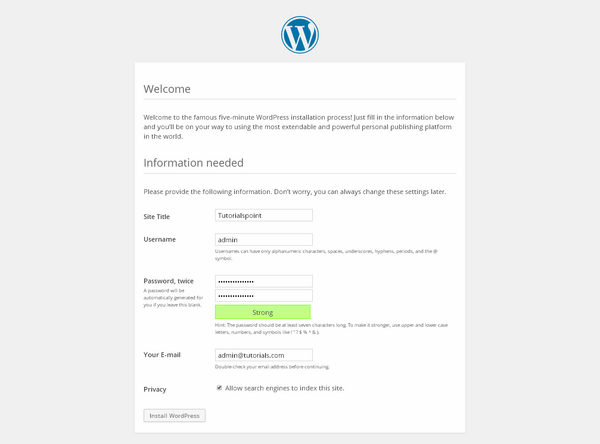
It contains the following fields -
Site Title- Enter the name of the website you want to create in WordPress.
Username- Enter the username of your choice while logging into WordPress.
Password twice - Enter your password twice to protect your website.
Your E-mail - Enter your email address for assistance with password recovery or any updates.
Privacy - Allow search engines to index this site when this checkbox is selected.
After filling in all the information, click the Install WordPress button.
Step (7) - Once the installation is successful, you will see a screen showing success as shown in the following screen.
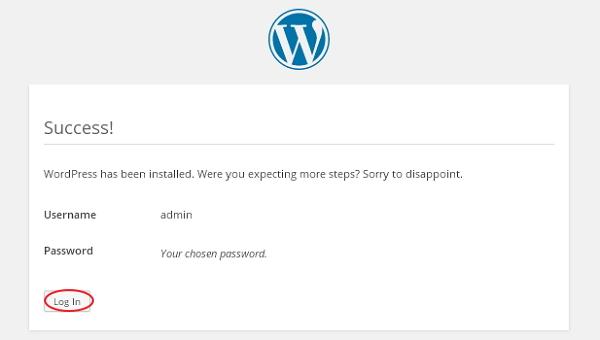
#You can view the username and password details added in WordPress.
Click the Log In button.
Step (8) - After clicking Login, you will get a WordPress admin panel as shown in the screen below.
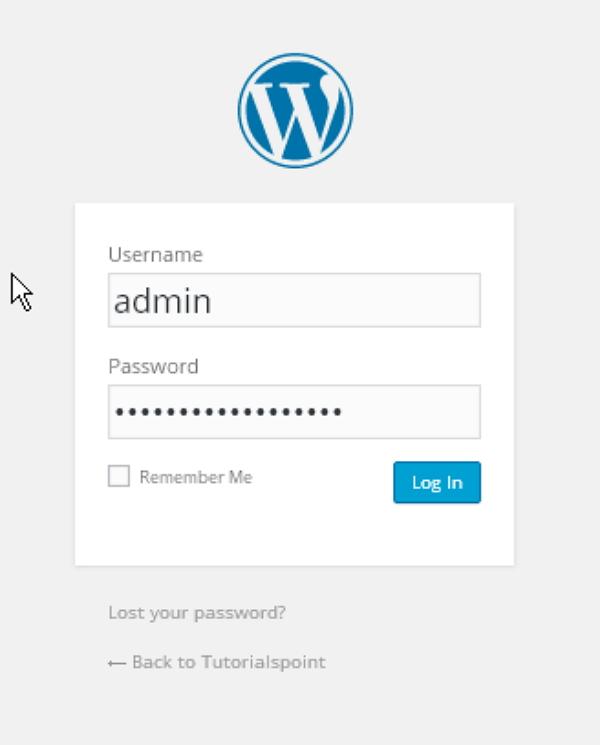
Enter the username and password you mentioned during installation as shown in step 6 and click Log In button.








